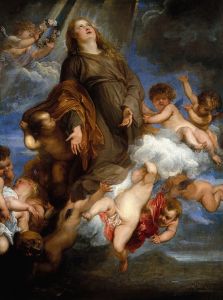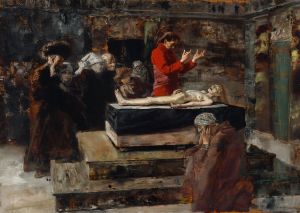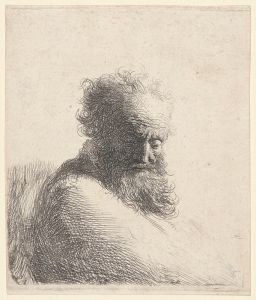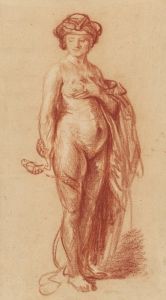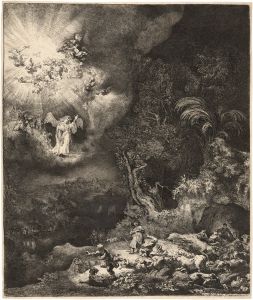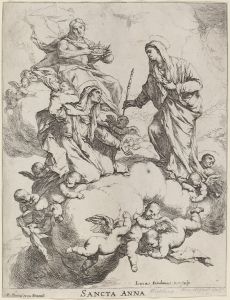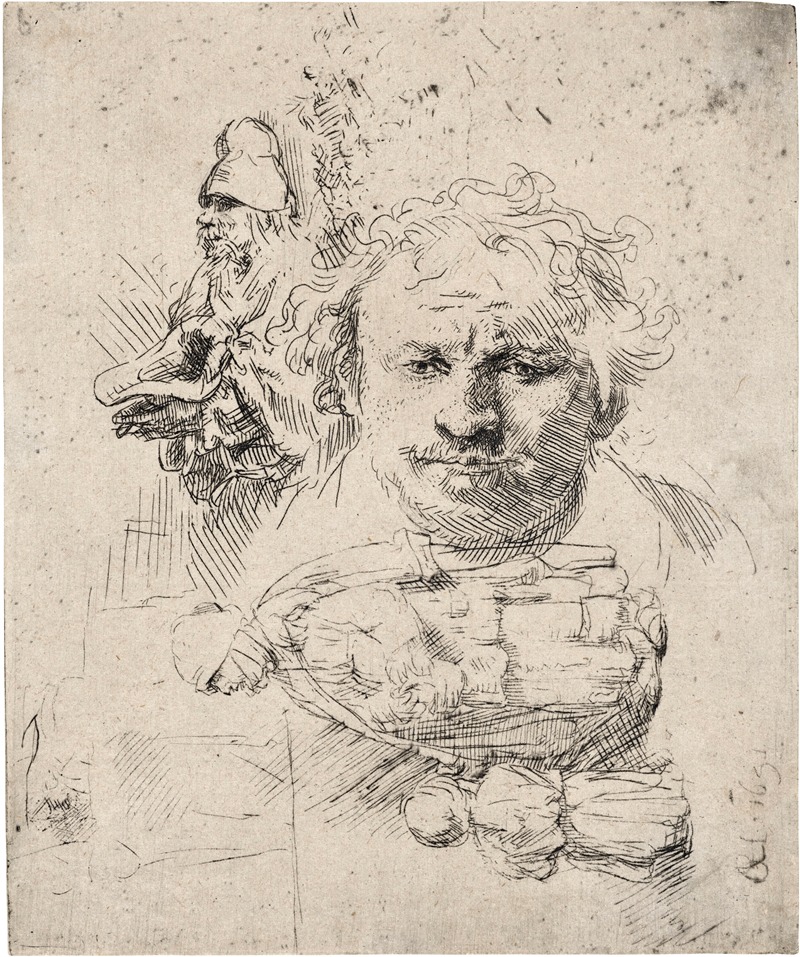
Sheet of Studies with the Head of the Artist, a Beggar Man, Woman and Child
A hand-painted replica of Rembrandt van Rijn’s masterpiece Sheet of Studies with the Head of the Artist, a Beggar Man, Woman and Child, meticulously crafted by professional artists to capture the true essence of the original. Each piece is created with museum-quality canvas and rare mineral pigments, carefully painted by experienced artists with delicate brushstrokes and rich, layered colors to perfectly recreate the texture of the original artwork. Unlike machine-printed reproductions, this hand-painted version brings the painting to life, infused with the artist’s emotions and skill in every stroke. Whether for personal collection or home decoration, it instantly elevates the artistic atmosphere of any space.
"Sheet of Studies with the Head of the Artist, a Beggar Man, Woman and Child" is a drawing created by the renowned Dutch artist Rembrandt van Rijn. Rembrandt, who lived from 1606 to 1669, is widely considered one of the greatest visual artists in the history of art and the most important in Dutch art history. He is known for his innovative techniques in painting, printmaking, and drawing.
This particular work, "Sheet of Studies with the Head of the Artist, a Beggar Man, Woman and Child," is a fine example of Rembrandt's skill in drawing. The drawing is executed in pen and ink, a medium that Rembrandt frequently used for his sketches and studies. The sheet features multiple figures, including a self-portrait of the artist, a beggar man, a woman, and a child. These studies are not part of a single narrative but rather a collection of individual observations and character studies.
Rembrandt's self-portrait in this drawing is particularly notable. Throughout his career, he created numerous self-portraits, which provide a detailed record of his appearance and emotional state over time. In this drawing, his self-portrait is rendered with a keen sense of observation and a deft hand, capturing his likeness with minimal but expressive lines.
The inclusion of a beggar man, woman, and child in the same sheet reflects Rembrandt's interest in depicting a wide range of human conditions and emotions. Beggars and common folk were frequent subjects in his work, highlighting his empathy and keen observation of everyday life. These figures are drawn with the same attention to detail and humanity as his more formal portraits, showcasing his ability to convey character and emotion through simple yet powerful lines.
The drawing is also an example of Rembrandt's practice of creating studies. These studies allowed him to experiment with different poses, expressions, and compositions, which he could later incorporate into his paintings and etchings. The spontaneity and fluidity of his line work in these studies demonstrate his mastery of the medium and his ability to capture the essence of his subjects with economy and precision.
"Sheet of Studies with the Head of the Artist, a Beggar Man, Woman and Child" is held in the collection of the British Museum in London. The museum acquired the drawing as part of its extensive collection of Rembrandt's works, which includes prints, drawings, and paintings. The British Museum's collection of Rembrandt's drawings is one of the most comprehensive in the world, providing valuable insights into the artist's creative process and development.
In summary, "Sheet of Studies with the Head of the Artist, a Beggar Man, Woman and Child" is a significant work by Rembrandt that showcases his skill in drawing and his interest in capturing a wide range of human experiences. The drawing is an important part of the British Museum's collection and offers a glimpse into the artist's practice of creating studies to inform his larger works.






